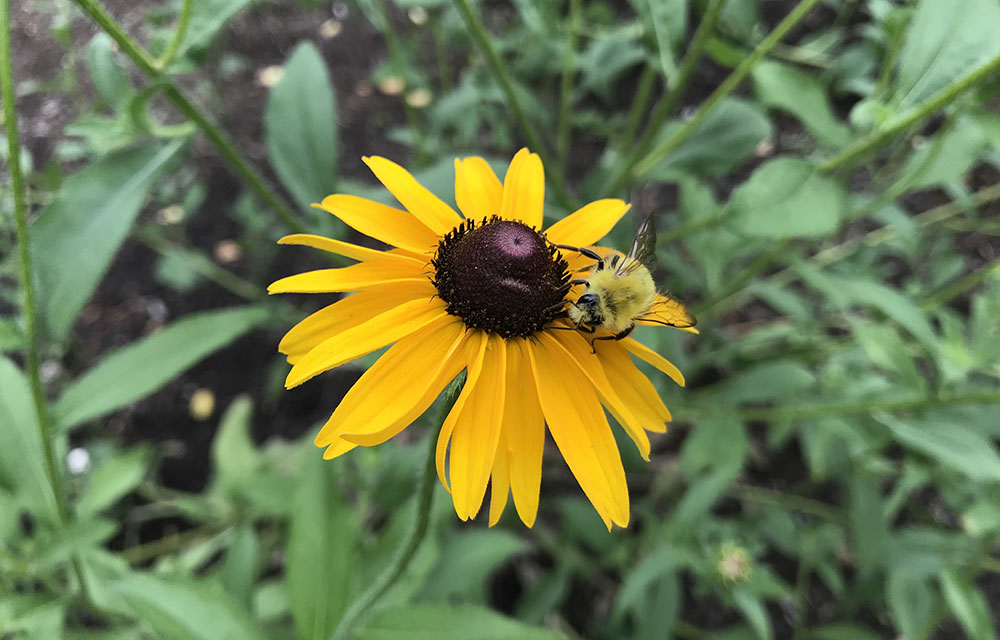
Bombus perplexus in the Larson Native Plant Garden.
It’s the time of year when butterflies and bees are starting to flutter around the Larson Native Plant Garden at PEC’s Warrenton office. Last spring, we began studying those fluttering insect pollinators, and have some initial data to share with you.
Aside from learning what kind of pollinators our garden was attracting and helping, we wanted to create a project that invited folks to experience the landscape and learn something new in the process. By studying how native plants benefit insects, we are hoping to learn the specific types of plants pollinators forage on, so we can make planting recommendations to homeowners.
As PEC’s habitat and stewardship specialist, I worked with volunteer Kelsey Schoenneman, a University of Virginia PhD student with Dave Carr at Blandy Experimental Farm and Virginia Working Landscapes, to develop a survey methodology that could be easily used by volunteer citizen scientists. The survey has two parts; the garden survey, which counts and identifies all blooming plants; and the insect survey, which counts and identifies all insects on those blooming plants.
In order to more easily identify the pollinators, the insects were split into groups: bumble bees, honey bees, non bees (beetles, flies, ants, wasps), other bees (native bees not easily identified), moths and butterflies, shiny green sweat bees and carpenter bees. We then recruited 15 citizen scientists; trained them; and ran the survey from May to September, 2018.
Initial Survey Takeaways
We were excited to learn that our citizen scientists counted 1,609 insects over four months! The unusual rainy season had a serious impact on our insect counts and survey days (several were cancelled). For the 2019 season, the survey period will increase from three to six months, in order to allow for more opportunities to observe pollinators and a more complete snapshot of the insect community.
A couple of quick takeaways:
- Largest number of one species counted: honey bees (213)
- Largest number of species group counted: non bees (603)
- Lowest number of species group that was counted: bumble bees (17)
Top Suggestions for Your Home Garden and Yard
In our first year observations, we noticed a few plants attracted many different types of pollinators, while other plants only attracted certain groups of species. This is a typical strategy for flowering plants; some only want to attract the most efficient pollinator, while others want to invite everybody to the party.
Party plants: If you are short on space and want the most bang for your buck, consider one of these plants. They attracted the highest diversity of insects and the most amount of honey bees.
- Pycnanthemum tenuifolium, narrow-leaved mountain mint (perennial)
- Ilex verticillata, winterberry (shrub)
Butterfly plants: These two species attracted the highest amount of moths and butterflies.
- Liatris microcephala, dwarf liatris
- Symphyotrichum novae-angliae, New England aster
This article was featured in our Spring 2019 member newsletter, The Piedmont View.
